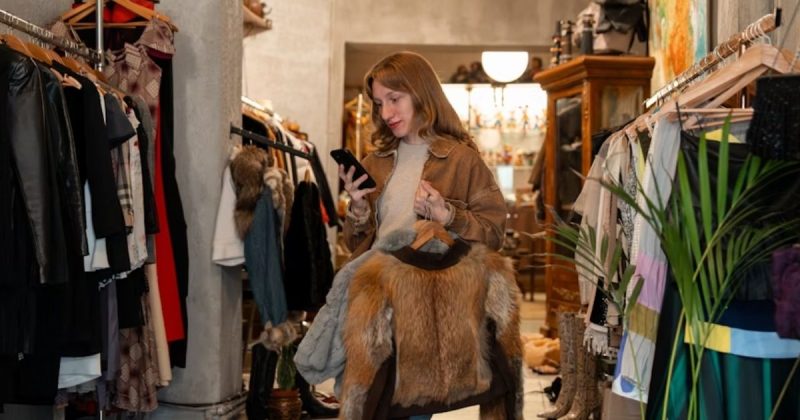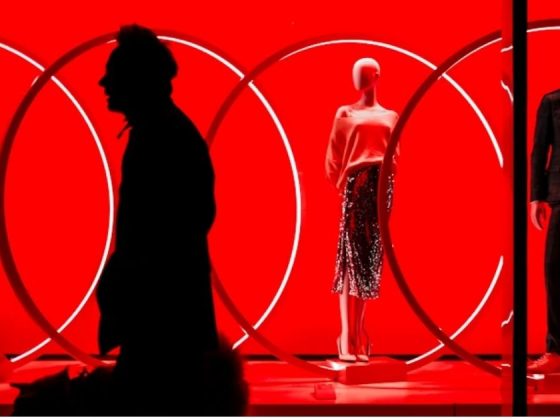In the world of fashion, inspiration has always been drawn from art, culture, and craftsmanship. But as technology, sustainability, and new consumer values reshape the industry, designers are exploring fresh ways to create. Enter fashion hackathons—fast-paced, collaborative events that borrow from the tech world’s playbook to spark design innovation.
What Exactly Is a Fashion Hackathon?
Traditionally, hackathons are intensive competitions where programmers and developers gather to build digital solutions in just a matter of days. Fashion hackathons adapt that concept to the design world. Participants—ranging from fashion students and emerging designers to technologists, sustainability advocates, and business strategists—come together to solve industry challenges. Instead of coding apps, teams might prototype garments from recycled fabrics, develop digital fashion concepts for the metaverse, or pitch new circular business models.
The atmosphere is charged with urgency and creativity. With limited time—sometimes just 24 to 72 hours—teams brainstorm, sketch, stitch, and pitch, often working late into the night fueled by caffeine, curiosity, and the thrill of innovation.
Why Hackathons Matter in Fashion
The fashion industry faces mounting pressure to address overproduction, waste, and environmental impact. Hackathons provide a unique testing ground for solutions that traditional design processes can’t consistently deliver quickly. They encourage risk-taking, interdisciplinary collaboration, and rapid prototyping, all of which are essential for reimagining how clothing is designed, produced, and consumed.
For brands, hackathons are more than competitions—they’re research labs. By hosting these events, companies can crowdsource bold ideas, connect with emerging talent, and demonstrate a commitment to innovation and sustainability. For participants, hackathons are career-launching opportunities: a chance to build portfolios, network with industry leaders, and push creative boundaries in a high-energy environment.
A Playground for Technology and Sustainability
Fashion hackathons shine brightest at the crossroads of innovation and responsibility. Recent events have unveiled innovations like biodegradable algae-based fabrics, AI tools to cut textile waste, blockchain for supply chain transparency, and even virtual-only garments that eliminate physical waste. Together, these projects show how hackathons are reimagining fashion’s biggest challenges with bold, practical solutions.
- Smart textiles that track health data or change color with temperature.
- 3D-printed accessories that reduce material waste.
- AI-assisted design tools that help predict trends with less trial and error.
- Upcycling techniques that turn discarded materials into covetable new pieces.
- Digital-only fashion designed for avatars, gaming, and virtual events, removing physical waste entirely.
These innovations don’t just make headlines—they point to real pathways for building a more resilient, future-ready industry.
The Community Spirit of Hackathons
What makes fashion hackathons truly distinctive isn’t just the innovation they generate, but the community they cultivate. These events bring together individuals from diverse professional and creative backgrounds—textile artists working with software engineers, data scientists collaborating with jewellery designers, and sustainability advocates brainstorming with retail strategists. The collision of such diverse perspectives often sparks ideas that no single discipline could achieve alone. In many cases, the most unexpected partnerships produce the boldest outcomes, reminding the industry that fashion’s future is built on cross-pollination rather than silos.
This spirit of collaboration goes beyond the teams themselves. Hackathons are often designed as ecosystems where knowledge-sharing flows freely, and participants are encouraged to exchange tools, techniques, and insights as much as final products. The buzz of activity feels less like a competition hall and more like a creative laboratory where everyone has a stake in reshaping the industry.
Mentorship amplifies this sense of connection. Seasoned professionals—whether from luxury fashion houses, tech start-ups, or sustainability think tanks—often step into the role of advisors. Their feedback helps refine raw ideas into viable solutions, while their presence bridges the gap between emerging talent and established institutions. For participants, this is invaluable: a chance not only to test concepts but to receive real-time guidance from industry insiders.
The result is a community that extends long after the hackathon ends. Friendships form, professional networks expand, and collaborations often continue in the form of start-ups, joint research projects, or new ventures. In this way, hackathons aren’t fleeting events; they become catalysts for lasting relationships and collective innovation, showing that progress in fashion thrives when competition gives way to shared purpose.
A Glimpse Into the Future of Fashion
Fashion hackathons represent more than short bursts of creative energy—they act as mirrors of the industry’s evolving priorities. In a landscape where both brands and consumers are calling for radical change in how clothing is designed, produced, and experienced, these gatherings provide a stage for testing what the future might look like. They show that tomorrow’s breakthroughs won’t necessarily come from months of behind-closed-door development, but from environments that embrace openness, urgency, and collaboration.
The future they hint at is one where fashion is no longer defined solely by seasonal collections or trend cycles. Instead, it could revolve around agile systems capable of responding to real-time challenges—whether that means rethinking supply chains to cut waste, inventing textiles that biodegrade safely, or designing digital garments that exist only in virtual spaces. By compressing the design process into days rather than months, hackathons highlight how speed and sustainability can coexist when creativity is unshackled from tradition.
Crucially, hackathons democratize innovation. They blur the lines between students, entrepreneurs, and established professionals, suggesting a future where ideas matter more than titles. They invite not just designers but coders, scientists, activists, and everyday consumers into the conversation, reflecting fashion’s growing identity as an interdisciplinary, borderless field.
If fashion is moving toward a circular, technologically infused, and community-driven model, hackathons are its living prototypes. They embody the idea that the future of style won’t be dictated solely by luxury ateliers or corporate boardrooms, but by shared spaces where collaboration fuels bold, rapid experimentation. In that sense, hackathons are less about competition and more about planting seeds—seeds that may grow into the next sustainable start-up, the next fabric revolution, or even the following way people define what it means to wear and experience fashion.
Why Fashion Needs Hackathons
The traditional design cycle is notoriously slow and rigid. Trends are set months in advance, collections take seasons to prepare, and process changes can take years to implement. Meanwhile, issues like overproduction, textile waste, labor exploitation, and climate impact can’t wait for incremental solutions.
Hackathons shake things up by compressing innovation into days rather than years. They encourage experimentation over perfection, pushing participants to test bold ideas quickly. This urgency fosters breakthroughs that established brands may be too cautious—or too slow—to attempt.
For brands, hackathons are a win-win: they attract emerging talent, generate fresh ideas, and offer a PR-friendly way to demonstrate commitment to innovation. Participants gain hands-on experience, exposure to mentors, and opportunities to build lasting networks that extend far beyond the hackathon itself.
Where Innovation Meets Sustainability
Some of the most compelling fashion hackathon projects merge technology with eco-conscious thinking:
- Circular Design Models: Teams reimagine fashion retail through swap systems, rental services, or garment take-back programs.
- Upcycling at Scale: Ideas that transform discarded textiles into sellable products, often with open-source templates so communities can replicate them.
- Wearable Tech: Smart garments that monitor health or adapt to the environment, bridging fashion with wellness and functionality.
- Digital Fashion: Entire collections created for avatars and virtual environments, sidestepping the need for physical production while appealing to younger consumers.
- Material Innovation: Prototypes that use algae-based fabrics, mushroom leather, or biodegradable textiles, reducing dependence on plastics.
These aren’t just flashy concepts. Many hackathon-born projects have gone on to influence sustainable practices, inspire start-ups, or secure collaborations with established brands.
Real-World Examples
Fashion hackathons are already making waves:
- Circular Fashion Hackathon (Europe): Focused entirely on sustainability, with projects exploring recycling systems, low-impact production, and waste-free supply chains.
- H&M Foundation’s Global Change Award: While not always branded as a hackathon, this competition functions similarly, awarding funding to rapid, experimental sustainability ideas.
- Parsons x Kering Hackathons (New York): These bring together students and professionals to brainstorm innovative solutions for the future of luxury fashion.
- Digital Fashion Hackathons: Growing alongside the metaverse boom, these events push designers to create virtual clothing and accessories, bridging gaming culture with haute couture.
Such events highlight how hackathons are no longer fringe experiments—they’re becoming an integral part of how the fashion ecosystem tests and scales new ideas.
More Than Competition: A Community Movement
At their core, fashion hackathons transcend the idea of contests and prizes. While teams may present polished pitches at the end, the actual value lies in the shared journey of experimentation and learning. These events create spaces where assumptions are constantly questioned—designers challenging technologists to think aesthetically, while engineers push fashion students to consider scalability or functionality. The energy is less about outperforming others and more about collectively pushing boundaries, showing that collaboration can be a greater driver of progress than rivalry.
This collaborative ethos is what transforms hackathons into community movements. They foster networks that often last long beyond the event itself—connections between strangers who become collaborators, mentors who continue advising young innovators, and teams who evolve their prototypes into start-ups. What begins as a 48-hour sprint frequently blossoms into long-term partnerships that ripple across the industry.
Mentorship serves as the backbone of this ecosystem. Industry veterans, sustainability pioneers, and technology experts step in not as judges sitting on pedestals, but as guides walking alongside participants. Their role is to ground wild creativity in feasibility—reminding participants that a brilliant idea also needs to work in practice. At the same time, mentors gain a fresh perspective by engaging directly with emerging voices who are unafraid to experiment with radical concepts. It becomes a two-way exchange of knowledge: experience informs innovation, while youthful vision reawakens established expertise.
Where Fashion’s Future Is Forged
Fashion hackathons are increasingly shaping the way the industry imagines its future. They showcase how design innovation, sustainability, and technology can work together, proving that creativity thrives under constraints.
The vision ahead is clear: rather than waiting for top-down solutions from luxury conglomerates or mass-market retailers, the future of fashion could emerge from grassroots gatherings where diverse minds meet, experiment, and prototype at breakneck speed.
Perhaps the next revolutionary fabric, the following zero-waste design method, or the next digital fashion platform won’t debut at Fashion Week, but at a hackathon where people dared to rethink the way style is created, shared, and sustained.








